Updated: 06-May-2021
From BMW Part 1
-The 6022s were planned for small helicopters. These engines gave 220 CV to 370 CV, depending on the version.
-The 8000 series were pure turbojets. The 8011, 8022, 8025, 8026 have been built.

"8026"
-The 8026 was successfully tested on a glider with only 46/55 Kgs. of thrust.
-The light 8026 turbine is a derivative from the BMW-6012.
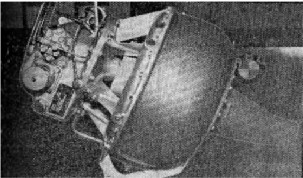
"BMW - 8026"
-Beginning with 50 Kgf of thrust it was used as an auxiliary engine for gliders as we saw in the main text.
-BMW made several "Joint Venture" agreements with other companies to develop several engines, such as the T-117 that is shown below.

"T-117"
-Around 1990 they made an agreement with Rolls-Royce to build a line of modern jets designated BR.
-The most interesting BR engine may be the BR-715 from the R-R Tay 670 family, being able to incorporate elements from the IAE V-2500.
-The BR is a turbofan for business aviation and regional airlines. It has a double shaft and delivers 14,000 lbf of thrust.

"BR-715"
-The BR-720 model reaches 22,000 lbf of thrust.
-The fan already has 1.4 m in diameter and has a 3-stage LP compression station added before reaching the HP compressor.
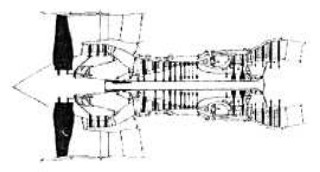
"BR-720"
-Airbus delivered detailed aircraft information to engine builders, so engine manufacturers would comply with their need.
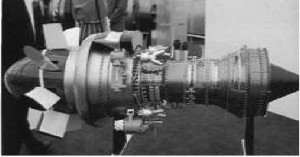
"BR700-TP scale model"
-And to end this BMW chapter, remember that the famous twin-cylinder motorcycle engines have also been "airplanized" (see AFR, e.g.).
-Since long ago, as in the case of the photo below, They used a 4 CV BMW in the small German Budig-Doppeldecker plane.

"In the Budig Doppeldecker"
-The BMW motorcycle engine has always been used with minor or major changes.
-The BMW M2-B15 motorcycle engine was used for Friedrich Budig's plane, in 1922. The engine gave 4.5 hp at 3000 rpm and drove a pusher propeller.
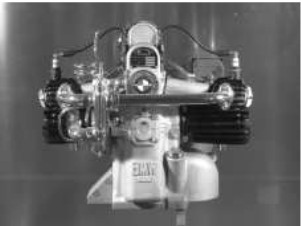
"BMW M2-B15 engine"
-In the USSR, between 1947 and 1955, twin engines were built for use in the light Kamov Ka-8 helicopter with engine designation M-76.
-It was very common to adapt the R-100, 1100D, 1100S, R-1150 and even the R-1200 motorcycle engines.
-The R-100 gives 70/80 CV. The adaptation made by Airdale uses Rotax gear to reduce engine speed to a third.
-The R-1100 delivers 90/100 CV.
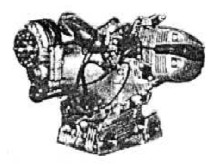
"“BMW-AFR"


“Two adaptations of BMW motorcycle engines”
-Another modern adaptation of a BMW R-100 motorcycle engine with Rotax model C gearbox, we can see below.

"BMW R-100"
From Appendix 6: New designs for engines in the main text are provided and because of the importance they had at the end of WWII, we show them for further clarification.

"BMW P.3302"
-The BMW P-3302 was from 1941 and belonged to Class I.
-The P-3303, not mentioned in the main text, was atypical within the line of BMW turbojet engines: it had a centrifugal compressor and its design was from 1938.
-This compressor was based on the company's experience with this type of compressors due to piston engine superchargers.
-The project was supervised by Kurt Loehner.
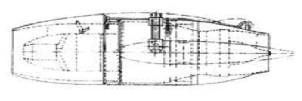
"BMW P.3304"

"BMW P.3306"
-The P-3306 job was carried out on request and the engine had to reach 1,700 Kgf.
-The P-3307 was a fungible, disposable engine for possible use in missiles. In a way it was the competitor of the Porsche 109-005 (see). They were to make simple engines with readily available materials and within few man hours (approx. 100). No details are known but it seems that the approach could be from the P-3303.
-We have a view of the anchor points of the P-3304 (109-002). As we saw before, these engines would give way to those already be operating as 109-003.

"BMW 109-003A"
-The German Ministry's turbojet classification was based on its power in Kgf of thrust as follows:
-Class I: up to 1000 Kp.
-Class II: from 1300 to 1700 Kp.
-Class III: from 2500 to 3000 Kp.
-Class IV: from 3500 to 4000 Kp.

"BMW 109-003 A-O"
-In the central cone of this engine's air intake there is a small and fast two-stroke Riedel (ver) engine for starting. In this case it was the AK-11 model.
-From Anthony L. Kay's documented text we gather the BMW 109-018 engine that in the main text appears in a schematic drawing.
-It was a Class II engine, and in 1945 it was the largest German turbojet engine.
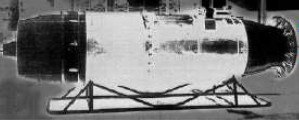
“BMW 109-018” (PiP)
-In the BMW 109-028 development there were several designs, just as they appear in Kay's text, which has surprised the author of this A to Z publication for the perfection of each of them.
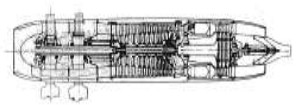
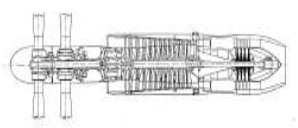

“Three designs for the 109-028” (PiP)
-In 1958, during its rebirth, BMW made the 6002 as an auxiliary turbine as we will see in the illustration below.
-To see the size of the power area with the accessories and reduction box is contrasting.
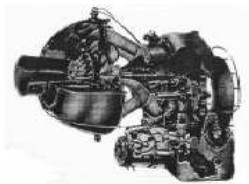
"BMW 6002"
-Oddly enough, the BMW 325 radial piston engine is also known as "Barium".
-In this expansion we include the BMW-803 with new photos that are made at the NASM. It has contra-rotary propellers.
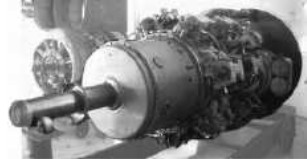
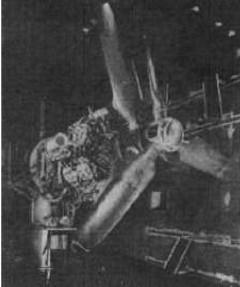
"BMW-803 on test bench"
-Now we have more details of the BMW 802 engine that is mentioned in the main text as a development of the 801.
-The engine was a two-row radial with 18 cylinders, but on the front it had a mechanical two-stage supercharger as shown in the diagram below, in which we see the distribution of the whole.
-A front fan forced the air cooling as it was a powerful engine giving 3,700 CV at 2,700 rpm.
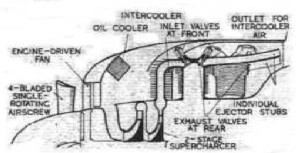
"Theoretical engine architecture"
-Just as it was published in England in 1945. And here a picture of the engine as it was found during the German occupation.

"BMW 802 on a trolley"
-After WWII, BMW made small turbines, see main text, whereof we have found another view of the already before mentioned 6012.
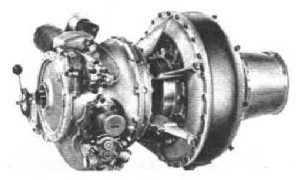
"BMW 6012"
-For the BMW motorcycle engine that was adapted by AFR (see main text) we have now an airplane rear view or motorcycle front view.
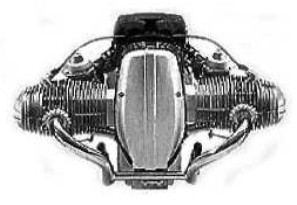
"BMW - AFR"

"BMW engine, cutaway"

"Another BMW motorcycle engine cutaway"
-For the automated guided Ruhrstahl X-4 missile, BMW made the 109-548 rocket engine that does appear in an outline in the main text.
-It occurred that production was interrupted by Allied bombing, shutting down the production of this air-air missile that was to be installed in most interceptor aircraft like the Fw-190 or I-262.
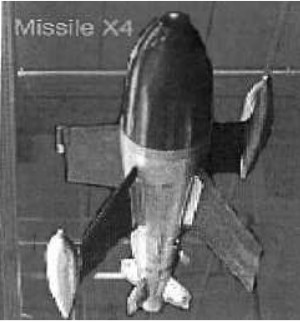
"X-4 missile with BMW engine" (PiP)
-Below in this new photograph obtained from the NASM, we show the propulsive part, which coincides with the diagram of the main text.
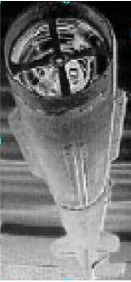
"Rurhrshtal X-4 rear view" (PiP)
-At the Museum of Munich we have spotted a 801TJ, which is a turbo-supercharged 801 engine.
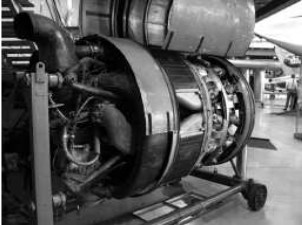
"El BMW 801 TJ"
-The turbo is almost vertical in the rear of the engine, slightly inclined rearward at the top, near the exhaust gas turbine. The compressor is below.
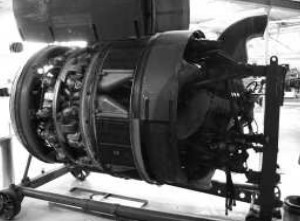
"Another view 801 TJ, from the other side"
-A new photograph of the 802. It has a forced air fan, like the 801.
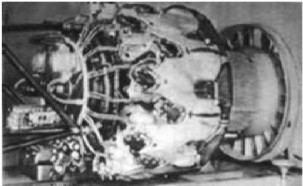
"BMW 802 unpublished photo"
-The 132 model was made in a large number of variants. Now we show the 132L that is missing in the main text.
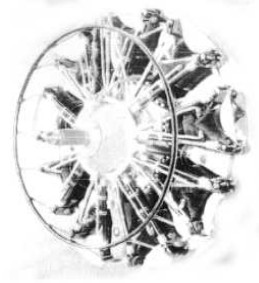
"BMW 132L"
-This engine is from 1939 and was mounted on the Fw-200 Condor transport plane. This aircraft achieved the distance record from New York to Tokyo that same year.
-And again, a BMW 100RS motorcycle engine installed on a bench and on top of an airplane firewall.
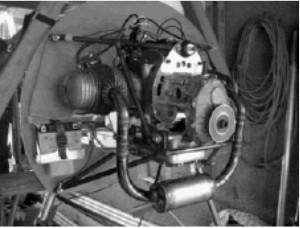
"BMW motorcycle engine with gear box"
From Appendix 7: The BMW VI 12-cylinder, upright-V aircraft engine was tested in a race car that also received a major name such as "Brutus". (See Mefistófeles Fiat, another example)
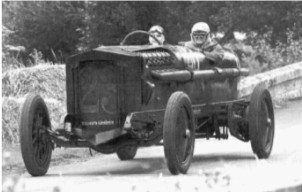
"Brutus with BMW VI"
-Test of a motorcycle engine to fit in a ULM or VLA.
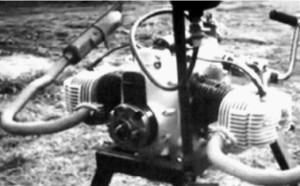
"BMW, motorcycle engine in initial stage”
From Appendix 9: Two 90/95 CV models for sale in Germany, considered ideal for Trikes.

"R-1150"

"R-1200"
-We have a photograph of the P-3302 that appears in the main text in a schematic drawing.

"BMW P-3302"
-To the author of this A-,Z this engine has been passed as a Heinkel, mistakenly of course.
-In the main text it is mentioned that the 139 model was an attempt to join two BMW-132s to obtain more power for new aircraft in development. But at the same time they finished the BMW-801 model, which was slightly larger.
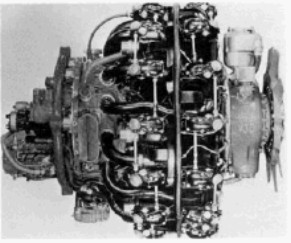
"BMW-139"
-The 801's success is proved by its installation in many first line German aircraft during WWII. They were mainly installed in Focke-Wulf 190 airplanes.
-Naturally, there were several 801 versions.
-We have some 802 versions, which were derived from the 801, and were two-row radials with forced cooling:
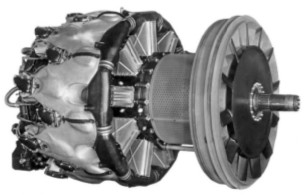
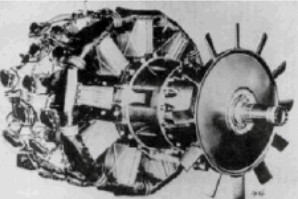
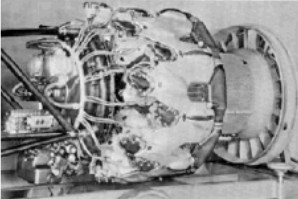

“The 802 and a mounting example ”
-And another, much larger, radial engine was the 803 that had 4 rows. This engine is mentioned in the main chapter.
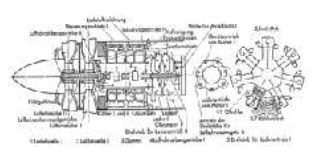
"803 diagram"

"803 top view in a museum"
-It is obvious that with such an amount of power a single propeller is insufficient and thus we see that the last 802s, and 803s in particular have two contra-rotating propellers. Besides, it eliminates the huge torque that is generated, giving more stability to the engine.
-A 803 mounted on a test bench is shown below. Curiously test beds of large German engines were tremendous.
-Best known were FAMO benches, whose advertisement we show below. An identical is (or was) at the INTA in Ajalvir (Torrejon de Ardoz), Madrid, at least until 2007. The intention was to sell it to the junkyard.
-It was a bench with a structure that was offered by the Germans to the Spanish current government in the early 1940's, Unfortunately this jewel ends up badly for being in the wrong hands.
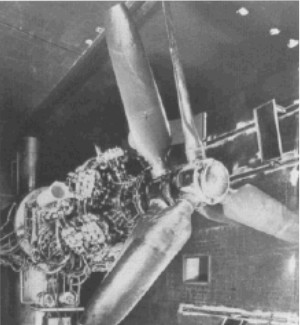
"BMW-803 on a FAMO bench"

"FAMO advertisement"
-Two V-12 type car engines of this brand are conveniently converted for use in a replica of a Vickers Vimy "Silver Queen" aircraft.
-This plane made an historic flight across the North Atlantic, but it was damaged when it landed at its destination.

"BMW V-12 exploded view"
-It originally had Rolls-Royce "Eagle" engines.
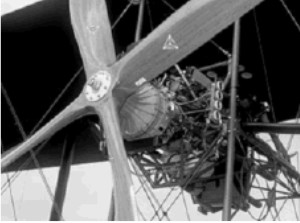
"Coverless engine installation"
-The propeller has four blades and the gearbox is well visible just behind it.
-The tubular engine bed with strong triangulation gives lightness and strength.

"Running BMW engine"
-The polygon fairing gives a very plausible look to the "Power Egg" assembly.
-In the years 1950 to 1960, they made Lycoming engines under license, specifically the GO-480 model for the light Dornier Do-27 aircraft.
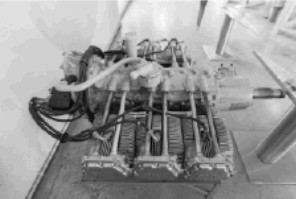
"BMW-Lycoming GO-480"
-The GO-480 is a classic Lycoming 6-cylinder, horizontally-opposed, air-cooled engine. It has a gearbox with spur gears and planetary satellites. The container above the crankcase is an oil separator.
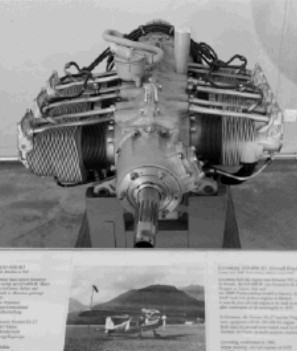
"BMW-Lycoming GO-480"
From appendix 10: Another old BMW motorcycle engine modification for ULM, made in the USA.
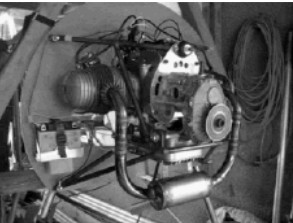
"Aero engine based on BMW, with reduction gear"
-An art work of a moving BMW -803 engine, thanks to computer technology, allows us to see moving all alternative parts together with the spinning contra-rotating propellers.
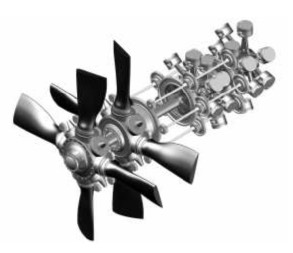
"Details for moving mechanism"
-The feature of this animation is a masterpiece and can be seen on the website of the Aircraft Engine Historical Society (AEHS)
-Two latest conversions of BMW boxer motorcycle engines, but one with propeller gearbox in the upward position and the other downward.
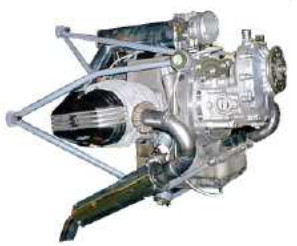

"Top photo with exhaust and bench"
-The lower model has the electric starter very visible from this angle. Therefore, the "cone" that connects the gearbox to the motorcycle engine, is bigger and with the appropriate form to contain devices like this starter.
-From the German magazine Flugsport between the wars.
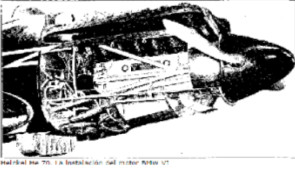
"BMW-VI engine installed on the Heinkel He-70"
Engines of BMW Part 2
We have no more detailed engine information for this brand. We continue our search. Any help will be appreciated.


